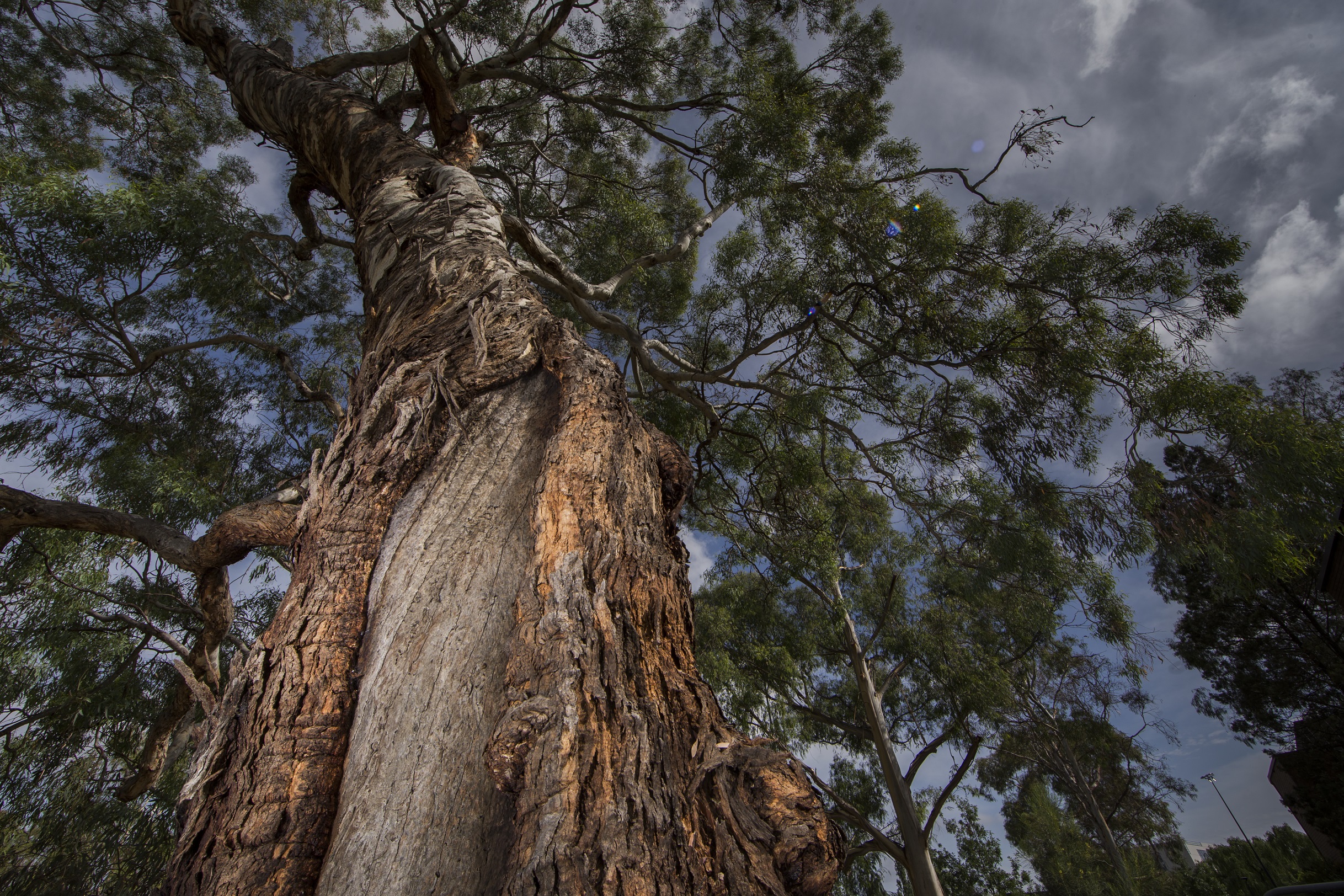For more than 21,000 years,
local Aboriginal people used the land on which the ANU campus sits for hunting,
camping and ceremony. For generations, they actively managed the land by
felling trees, cultivating plants and through firestick management.

Aboriginal people removed bark from trees to construct shelter, watercraft and containers, as well as for ceremonial purposes. The removal of bark stops any further growth in the affected area, resulting in a scar of exposed sapwood (called a ‘dry face’). Early European settlers adopted the techniques of bark stripping they observed from Aboriginal people, often to weatherproof buildings. Research indicates that both Aboriginal people and Europeans have created the scar trees on the Acton campus.
This yellow box tree is estimated to be around 300 years old, a remnant of the grassy woodland that once covered the campus.
Image: ANU Photography, 2016.
Stone tools, grinding stones and axe heads
In the late 1920s and early 1930s, Henry Percival Moss, Chief Engineer at the Department of the Interior and amateur archeologist, explored the land around Black Mountain and along Sullivans Creek and the Molonglo River. He collected hundreds of Aboriginal artefacts, including stone axes, flakes, scrapers and grinding stones, tools used for hunting, carving and food preparation.
Stone hatchet with ground edges collected near the 'old stables'. Image: Jason McCarthy, National Museum of Australia.
Stone hatchet with ground edges collected near the 'old stables'. Image: Jason McCarthy, National Museum of Australia.
Grinding stones collected near the former Australian Institute of Anatomy. Image: George Serras, National Museum of Australia.
Stone tool found near old Acton offices. Image: George Serras, National Museum of Australia.
Stone tool found near old Acton offices. Image: George Serras, National Museum of Australia.
Stone axe found near Black Mountain. Image: George Serras, National Museum of Australia.
In keeping with the archaeological practices of the time, Moss removed these objects without permission. He stored his finds in envelopes, also recording the locations and dates he collected them. Moss later donated his collection to the Australian Institute of Anatomy, which were then transferred to the National Museum of Australia in 1985. His collections are a rare material record of the Indigenous occupation of the site now occupied by the Australian National University.
Deep Dive
For an in-depth exploration of the Aboriginal history of the Acton campus and its continuing culture and connection to Country, take the ANU Aboriginal and Torres Strait Islander Heritage Trail. On this trail, you can learn about the importance of Sullivans Creek and Black Mountain, bush foods, ceremony and tradition, and the way in which Aboriginal people managed their landscape. The tour also covers the many Schools and Centres that contribute to Aboriginal studies, including the National Centre for Indigenous Genomics; the School of Archaeology and Anthropology; and the Tjabal Centre, a meeting place and support network for Indigenous students. The trail also highlights the social history of ANU, including the contribution made by students towards the establishment of the Aboriginal Tent Embassy; and the support of Abschol, an organisation established to support University scholarships for Aboriginal students.











